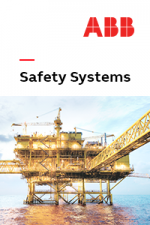- Russian Dam Disaster: Assessing the Cost of Failed Safety Practices
- Analyzing the Human Element of the Russia Dam Disaster
- Turbine 2: How a Track Record of Uncertainty Led to Disaster
- Russian Dam Disaster: A Reckoning for Bypassed Safety
- When Running People Past Their Breaking Point Effects Safety: The Bayer Crop Science Incid…
A Process Hazard Analysis of the Human Factor: Piper Alpha Incident
Operator and supervisor errors escalated a process safety incident into a disaster. Could people better trained in oil and gas safety procedures have prevented it, or stopped the process safety incident once the fire stated?
On the night of July 6, 1988, five operators were in the control room on Piper Alpha. That was the minimum compliment needed to operate the platform. Investigations after the disaster discovered that they had all been promoted one level above their normal position and were considered less experienced than the longer-term men that normally ran the platform. This was not a company that was known for a strong process safety culture. Meetings and briefings on the platform did not begin with a safety minute. Maintaining production was driven harder than maintaining a safe working environment.
Investigators examining the disaster after the fact wondered if, prior to the first fire breaking out at 21:58, the operators were aware of the larger-than-normal flare on the southwest side and what might be causing it. It was also unclear if anyone was paying attention to the gas detectors and what they might be revealing. On Piper Alpha safety instrumented systems were not well designed or deployed. As a case in point, the condensate pump B trip was likely caused by a sensor that was not configured to operate at the higher pressures necessary when working in Phase 1. Indications are that gas alarms were received in the control room, but the way the signals were displayed did not indicate immediately which detectors were sending alarms. Moreover, the gas detection system had a reputation for issuing false alerts so they might have been ignored as a matter of course anyway.
After the first explosion, operators had a very short window of time in which to respond and prevent further escalation because power was lost almost immediately. With no power, the fire suppression pumps couldn’t work, but that system was also prone to clogging.
Had trained operators been on duty, they might have been able to foresee what was likely to happen, and used the process control system to slow the escalation. Of course that assumes they had a clear understanding of what was happening and in which parts of the platform, which might not have been the case. The way things went, it was only a matter of minutes before the control room was lost due to its location next to the production modules
The OIM (offshore installation manager) has been singled out as contributing to the safety incident because reports say he panicked. Falling into a state of shock, he was unable to issue evacuation orders, the lack of which likely increased the number of fatalities, in whose number he was counted. Whether that was a matter of poor training or a problem with his temperament, the result was a human factor contribution to the hazard. As a result, as fireboats arrived, there was no one to give orders to begin fighting the fire until the master of one of the boats assumed a role as OSC (on-scene commander) and guided the efforts. By that time it was largely too late.
The combined losses of the control room as a means to facilitate countermeasures and a commander to guide the effort meant there was little that could stem the loss of the systems that could help extinguish the fires. Someone that knew the platform well enough to call for alternate evacuation routes that were still usable before the PA system failed might have saved some lives. He could have also directed the fireboats and perhaps brought them into action sooner. The fireboats probably wouldn’t have been able to extinguish the blaze, but they might have bought precious minutes to allow more people to escape. Some men had to jump from the 175-foot helideck level or the 68-foot level while others managed to climb down to the 20-foot level before jumping. Some of the evacuation craft were located where they were cut off by the fire and could not be reached soon enough.
On balance, all the human factors involved in the Piper Alpha disaster caused more problems than they solved, but they were not the only issue by any means. Process safety management and safety training failures were arguably the most critical. Inadequate safety systems should have driven an awareness of how important it was for people to work safely and be aware of the role everyone played in maintaining life on the platform.


